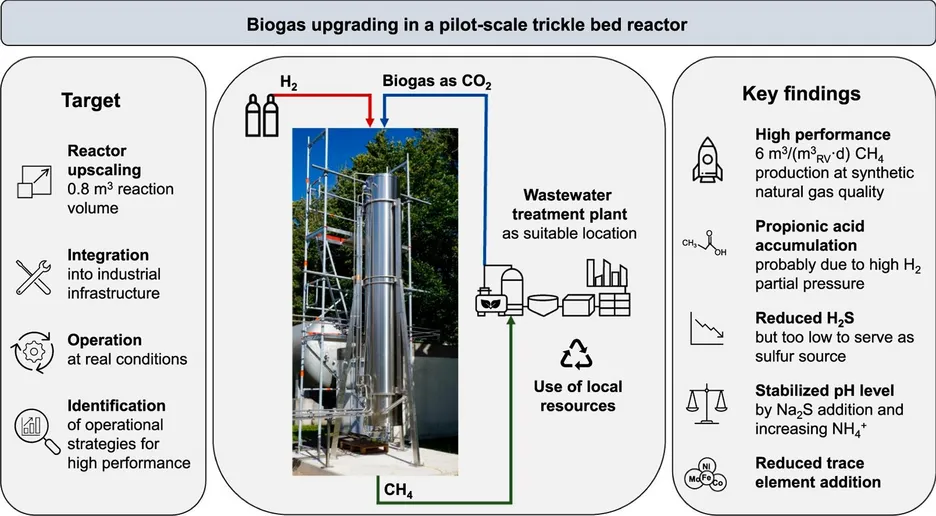The biological methanation of H2 and CO2 in trickle bed reactors is one promising energy conversion technology for energy storage, but experiences at pilot-scale under real application conditions are still rare. Therefore, a trickle bed reactor with a reaction volume of 0.8 m3 was constructed and installed in a wastewater treatment plant to upgrade raw biogas from the local digester. The biogas H2S concentration of about 200 ppm was reduced by half, but an artificial sulfur source was required to completely satisfy the sulfur demand of the methanogens. Increasing the ammonium concentration to > 400 mg/L was the most successful pH control strategy, enabling stable long-term biogas upgrading at a CH4 production of 6.1 m3 /(m3 RV⋅d) with synthetic natural gas quality (CH4 > 98 %). The results of this study with a reactor operation period of nearly 450 days, including two shutdowns, represents an important step towards the necessary full-scale integration.
